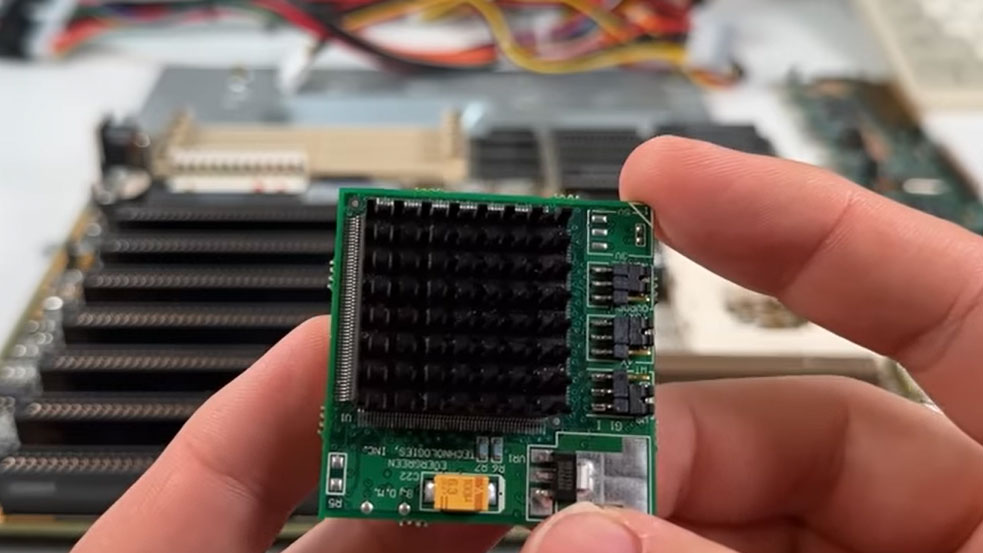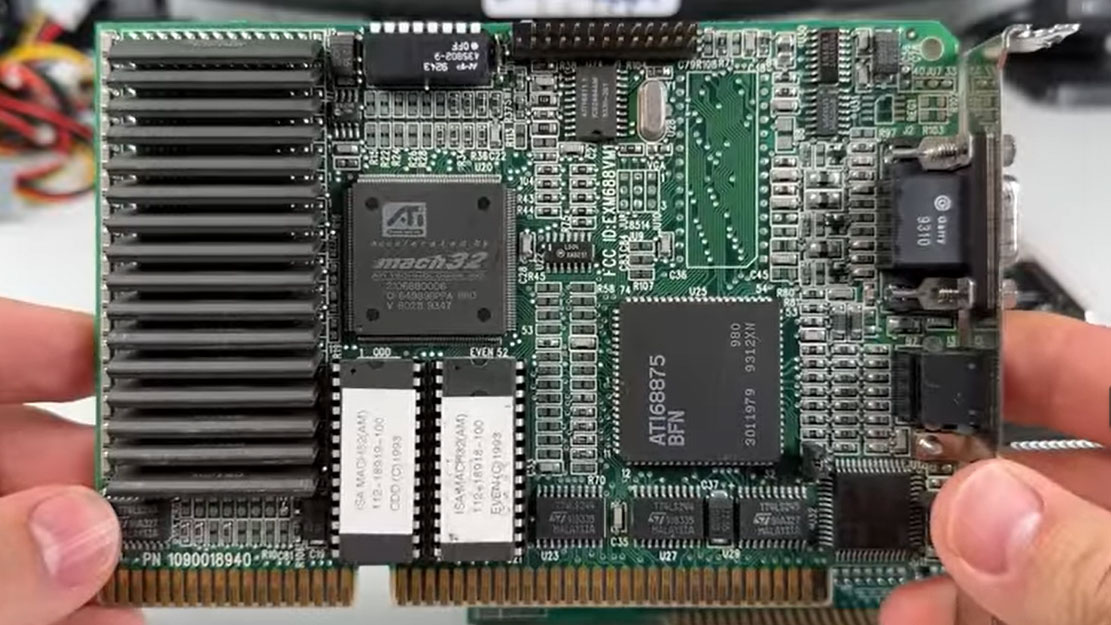
YouTuber VswitchZero was a little disappointed after getting his hands on a servicable old 486 DX66 and firing up Doom. Wearing the rose-tinted spectacles of PC gaming nostalgia, one might expect one of the fastest pre-Pentium systems to offer quick and slick Doom thrills, but VswitchZero lamented that Doom ran “very choppy, and [it was] not a lot of fun to play.” The issues were largely caused by the PC’s ISA bus graphics, so the YouTuber decided to work on a project to overclock the ISA bus to the max... resulting in a successful overclock of 212% recorded.

VswitchZero’s ISA hijinks were partly inspired by the acquisition of a 1992 vintage DEC Digital system with ISA slots only, as mentioned above. Further inspiration came from a YouTube channel called CPU Galaxy, which ran an ISA Doom 25 FPS challenge for subscribers. The name of the challenge provides a hint at the low frame rates pioneering PC 3D gamers had to suffer.
For some background to ISA bus overclocking, the bus speed of this old 16-bit interface was usually ~8 MHz. The ISA clock was typically derived from a divider of the front side bus speed. For example, with a CPU running at 33 MHz, a divider of a quarter was used, so the ISA bus would run at 8.25 MHz. However, some motherboards had an independent clock generator crystal. Whichever way your motherboard was configured, adjusting the divider could provide some interesting ISA overclocking opportunities. For contemporaneous graphics cards, which would potentially saturate the 16-bit 8 MHz ISA bus, some decent gains could be attained using this overclocking method.

VswitchZero’s video shows us the old ISA system he put together for his overclocking feat. The YouTuber talks us through the ‘rules’ of the ISA Doom 25 FPS challenge and his choices for motherboard, CPU, RAM, storage, and video card. These choices are important, as some parts are more flexible or malleable to the overclocker’s will, while others will quickly become unhappy with any ISA overclocking — impacting performance and stability.
The system motherboard chosen was an Asus model with SIS chipset, which offers some decent tweakability. Interestingly, the CPU used was an Evergreen upgrade socket AMD 5x86 chip which was praised for its performance, multiplier, and bus frequency flexibility. The ISA graphics card selected was the ATI Mach 32, which apparently was a sweet spot choice for ISA systems and overclocking.
Initial overclock testing with the ISA bus pushed to 11 MHz fell flat, as a BIOS bug meant the divider setting change didn’t result in a faster bus speed. A BIOS update (which was rather laborious and required specialized hardware) did the job. Most importantly, the Doom benchmark showed that an average 21.9 fps was achieved with the 11 MHz ISA bus. VswitchZero was relaxed about still being some distance from beating 25 fps, as there remained optimizations for front side bus (FSB overclocking), CPU overclocking, and other ISA dividers to test.
Configuring a 50 MHz FSB, and 3x multiplier, resulting in a 150 MHz CPU clock had a larger impact. Memory timings and wait states could stay at the lowest values possible, with only the cache read state needing some reduction. With these settings and a 12.5 ISA bus speed, Doom ran stably at 25.1 fps. The YouTuber had cracked the 25 fps milestone.
Next, applying a divider to run the ISA bus at 16.67 MHz worked out without any glitches or other side-effects. Doom could run at 30.4 fps given these settings.


Moving up to an amazing ISA bus speed of 25 MHz, the system remained stable, and VswitchZero says the system could rival VESA Local Bus systems in benchmarks. As for Doom, it managed a flawless run at 35.7 fps. This was quite a feat, considering it started at less than 20 fps.
At the end of the main testing spree, VswitchZero decided to assess some different components, including other ISA graphics cards. You can see the further testing and follow the discussion of the different parts in the video embedded above.







